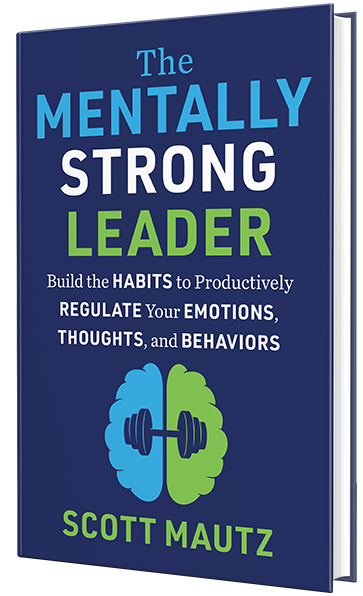
INSIGHTS (on leadership/self-leadership)
It can be hard, really hard, to be resilient in the face of setbacks. Yet in a world with ever more adversity to face down, fewer things are more important in self-leadership.
It’s vital with any setback to find the agreeable adversity – not everything about adversity is distasteful, after all. What can you learn from that adversity? How might you grow from it? What opportunities does it present? But a major roadblock arises that blocks us from quickly finding the “agreeable” part of adversity. We have trouble letting go. We get stuck in “It’s not fair,” we focus on how painful the setback is, what we’ve lost because of it. So then, focusing on letting go is the way forward, right?
Nope.
Focusing someone (or yourself) on letting go in times of setbacks is actually bad advice. In doing so, you’re engaging in one of the hardest tasks in all of psychology – what’s known as cognitive dismissal (trying to let go). That’s tough sledding. So, what to do?
Don’t focus on letting go; focus on letting be.
Don’t dismiss or try to forget the bad thing that happened as if it never happened – almost impossible. Instead, practice cognitive acceptance – accepting that the bad or unfair outcome happened, that it’s still there – you’re just letting it be. You don’t dismiss the outcome, you change your relationship with it. You let it sit in the background while you move towards the agreeable adversity to be found.
IMPERFECTIONS (a mistake many make)
How’s this for ironic – pursuing perfection BLOCKS you from achieving success. Frustration, disappointment, and exhaustion results instead.
The Perfectionism Pyramid is the best way to break this habit, as I share in my recent book, The Mentally Strong Leader.

Here’s a quick spin through the Pyramid. It starts at the bottom with Awareness. Mainly, acknowledge the full cost of perfectionism. It keeps you from spending your time in far more valuable ways. Also, perfectionists tend to judge and criticize not only themselves, but those around them, too. The more they see their own flaws in others, the more they pick at them. The criticism and judging pushes people away and isolates the perfectionist, further increasing their “I’m not good enough” belief – a vicious cycle.
Also, be aware of your “shoulds,” and limit them. For example, “I should go over this again to make sure it’s 100 percent right”, “This should be a lot better than it is right now”, “I should have done this instead of that.” The very nature of the word fosters overthinking and attempts to control everything – not helpful.
The next level up is about Standards. Specifically, get good at “good enough.”Chances are, nobody’s holding you to the same standards you’re holding yourself to. There’s nothing wrong with high-standards, of course – that’s healthy. The problem arises when you view success as “all or nothing,” all the time. Learning to say “good enough” can be liberating.
Also at this level, set a standard of self-acceptance. In other words, “Accept yourself before you wreck yourself!” A friend of mine was a prisoner to her perfectionist tendencies, constantly trying to avoid any rejection, disappointment, or criticism. She broke free only when she learned to practice self-acceptance and self-appreciation. She learned to forgive herself. She gained the courage to be imperfect (like we’re all wired to be) and to live with vulnerability.
Now the top level of the Pyramid – where to focus? Focus on maximizing impact, not achieving perfection. Recognize when your efforts are at a point of diminishing returns, and move on. If you’re honest with yourself, you’ll spot when your incremental efforts are no longer having an impact. Accept that sometimes just being done is a worthy goal.
Finally, focus on process, not outcome.Perfectionists focus on the outcome (will it be perfect or not?), missing the richness of the process – the opportunities to learn and grow along the way.
So, practice each level of the Perfectionism Pyramid, and success goes to another level!
IMPLEMENTATION (one research-backed strategy, tip, or tool)
The tip I’ll share in the IMPLEMENTATION section this week couldn’t be simpler, but can’t be overstated in its impact.
True character reveals itself in times of crisis. Use crisis to show yours.




Leave a Reply